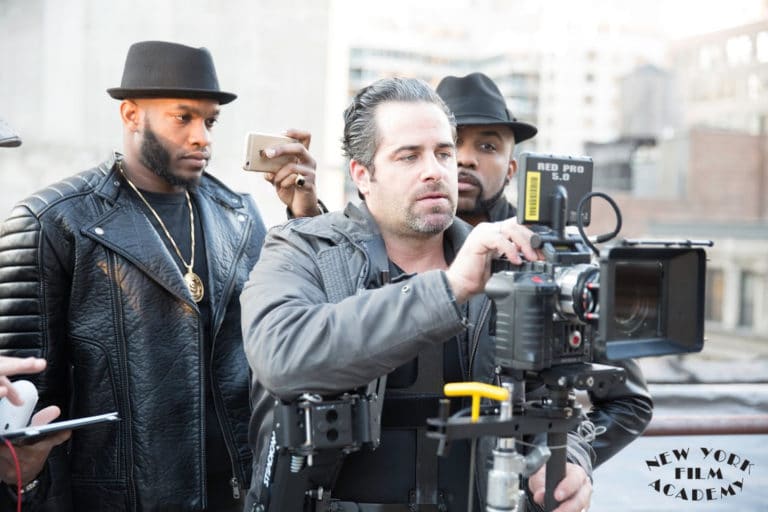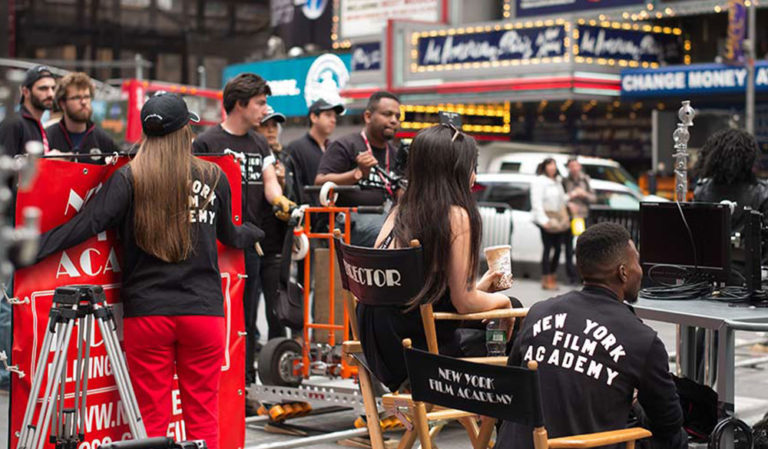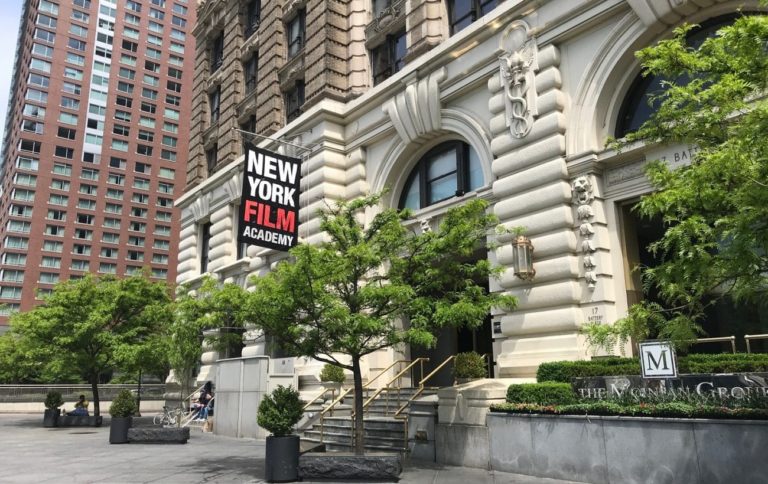Towards the Next Gen: Teaching VR
The VR industry has finally grown to point where to learn VR one no longer has to sit in front of a computer and piece together YouTube tutorials. Or make a hodge-podge from college classes. Jonathan Whittaker, current Chair of the New York Film Academy’s VR Department, talks to VRTL about VR education, his own and the way to teach VR. Hint: it’s more hands-on.
Film DIY
Just like now with VR, not all institutions of higher learning had film courses. Jonathan entered university as a political science major, but became disenchanted with the entire political process and figured you know what? I’ve always talked about making films that can be a massive platform for spreading messages and instigating change. He exited political science and managed to cobble together a filmmaking program at the University of Maryland by taking film courses in various departments, like history, art and English. The most career predictive was a course entitled “Interactive Storytelling.”

“We had built a narrative that was a bit of a Choose Your Own Adventure. It was extremely clunky. You had to you had to click on the screen and try to follow these divergent storylines depending on what you chose. Of course, because we were undergrads, it was all about going to a house party and trying to score a date.”
After graduation, wanderlust set in and Jonathan went to Prague. He found a job in a small production studio where he first worked as an editor and later as a director of scripted comedies and “how to” videos for online consumption. He moved back to Philadelphia and started doing a few music videos and making content for a company that later become Comcast (a major cable operator in the US—Ed.)
Jonathan’s older brother was at ESPN at the time. Together they hatched a plan to collaborate, which entailed a move to NY. Jonathan’s brother produced a couple of the projects that Jonathan directed, including some of the 3D projects for Sony Pictures. He was the lead producer on those until the older sibling “jumped coast” and moved to California. Eventually, Jonathan pursued a MFA in film production and later moved towards VR and teaching.
In many ways, the haphazard path Jonathan took to filmmaking is much like the way VR makers have had to do it for decades: gather insight and experience from wherever you can get it and fashion it towards 3D and VR.
Long Way to Short and Direct
This circuitous route has given Jonathan the will to create very concrete and specialized VR courses. Currently NYFA offers eight-week hands-on courses with tracks in game design or narrative VR (and possibly a third which merges the two). Their curriculum works in reverse; rather than learning and then being tested, students learn by moving sequentially from small projects to larger ones. In just two months students are tasked with producing four experiences, each one building on the techniques used in the previous while also increasing in complexity. Over the course of the eight weeks the students will have covered Immersive Design, UX, Production and Post Sound, Directing, Acting, Post Production and exhibition.
“The first project is about understanding camera placement, and the belief that when you place the camera there, you’re placing it as if you were there.” How does it affect them? How do you work with that? Then it moves to a project that is mainly focused on spatialized sounds. They use three stills; they have to go out and shoot three 360 stills and tell the story with sound alone. Then they do a project where we forced them to shoot an interior and they have to use lighting to help to tell the story. They have to use spatialized sound and have three different camera setups. They shoot as a group under the supervision of a production design instructor, cinematography instructor and a director’s craft instructor, all who teach specifically for VR.”

From the very first simple one-shot exercises to the more advance projects, students get out there and start building on how to communicate in this new medium. “They begin to understand that camera placement affects the way we feel about the environment and how the environment can even be character. Obviously you act differently in a museum than you do at a concert venue,” says Jonathan.
“Yet, the foundation always goes back to story writing,” Jonathan insists. Though he does emphasize the way “we consume cinema’s visual language” and should not fail to overlook it, either. From a cinematography and directing standpoint, our brain reads the scene; the emotions the scene evokes makes it important to ensure it is linked to the story. Camera movement and lighting play a role (‘although we are relegated to whatever lens was the manufacturer put into the unit’). In VR, we also have to consider the character’s eyes for the eyeline.”
Students, in their eagerness to experiment, sometimes skip this in favor of whizz-bang techniques that are out of the story’s context (though plenty of Hollywood filmmakers do that, too). The question still needs to be “is that relevant to the narrative?” In school, teachers can help remind students to reflect on those questions.
It is one of the reasons the program requires shooting at least three-minutes of dialogue. For example, “What in the frame composition of how are you blocking the actors communicates something about their relationship–like a power struggle–within this particular setting?” Meaning close-ups create more intimacy or tension; wide-angles more balance. Obviously there’s a history of people theorizing about the best position or shot for years, but thinking about it helps the student make good story decisions.
It’s Still A Geeky World
Jonathan says NYFA has minimized the need for technical knowledge in their program as much as possible, but students with a passion for VR filmmaking should also be–at the minimum–computer literate. “We want the students to focus on building solid narratives, but it does not eliminate the need to be able to work on Adobe Premiere, Photoshop or Reaper for sound. Add all that to the need for a solid work ethic, too.”
The holistic and hands-on approach has not gone unnoticed. NYFA was selected both by Variety and Hollywood Reporter as one of the 25 top film schools in America. Not bad to join the ranks of the usual suspects like NYU and USC.
The domestic accolades seem to have more impact abroad than at home; a lot of the students in the NYFA VR program are coming from far-flung places like Columbia, Saudi Arabia and Brazil. It is probably an indication that people everywhere are also tired of puzzling together a VR education with YouTube videos or, like Jonathan Whittaker once did, with random filmmaking courses, too.





